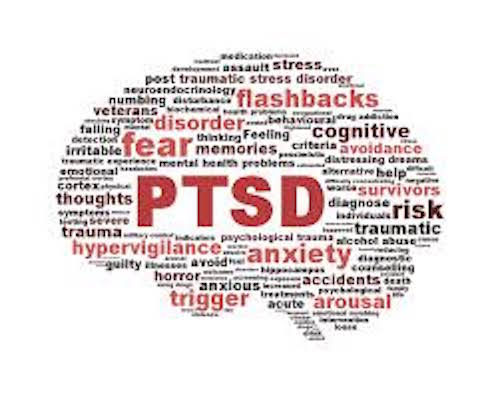
Nov 18, 2014 | Trauma Sensitive Yoga, Yoga Conference, Yoga Festival, Yoga for First Responders, Yoga for Vets, Yoga Pre-Conference
Click HERE for the latest blog – “Magic Portal, Winter Solstice”


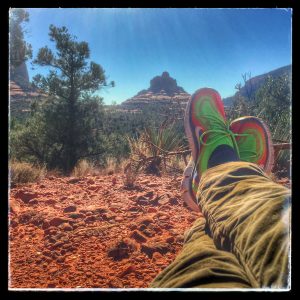
My shoes hiking in Sedona Nov 2014.
[addtoany]
This is where I live, and all I see is grey… My body pulses with electricity like current that activates every fiber of my being. My mind begins to panic, yet it, receiving stimulus from my senses, should be reporting to me that everything is ok; there is no threat.
Then why do I just want to explode out of my body, so tense… ready for action, taut as a wire and pulsed to manage… something.
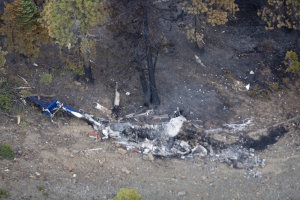
Iron 44 Crash Site (Aug 2008)
But, there is no threat. No something… just the grey, foggy, unreal reflection of what my eyes are seeing at that moment. Today, the tears came again finally when talking to a former colleague about the worst aviation fatality incident in wildland fire history. Iron 44. To me, it matters, yet the story is not necessary to tell. It was traumatic, stressful and life threatening. It involved fellow firefighters (9) perishing in the line of duty, in a horrible way. There was chaos and confusion. It all happened in an instant and the aftermath begins. Hundreds of people counting on me, depending on me to keep my shit together… So, I did.
And so does each and every First Responder, Police Officer, Wildland Firefighter, EMT, Paramedic, and all the likes… Volunteer or paid, these men and woman are the front lines of this countries community safety and well-being, risking life and limb, 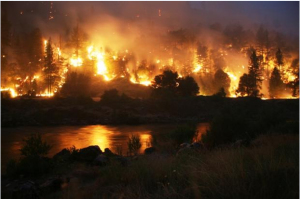 placing themselves in harms way, so that others may come through, whatever the threat may be. These people give all of themselves in selfless service; putting mind, body and spirit through enormous amounts of stress, trauma, fatigue, and physical and emotional extremes. These are our countries unsung heroes; veterans in service of managing domestic incidents.
placing themselves in harms way, so that others may come through, whatever the threat may be. These people give all of themselves in selfless service; putting mind, body and spirit through enormous amounts of stress, trauma, fatigue, and physical and emotional extremes. These are our countries unsung heroes; veterans in service of managing domestic incidents.
In the line of duty, each and every service has it’s own very unique and distinctive threats and situations that personnel must deal with, along with the things that they will see and experience. Most people not in these lines of work, will likely have no idea what these men and woman face each day and the things they must do in order to do the work and keep their shit together. But, that will only matter if you choose to serve them and you begin to see the anguish and pain in their eyes. Then, empathy will be your friend and allow you to guide these fragmented beings into a place of peace.
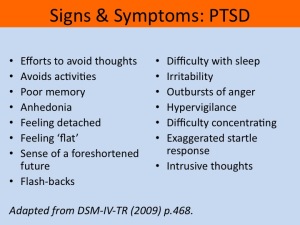 I can now officially say, I have suffered from PTSD. It has had a debilitating effect on my life, relationships, work… absolutely every aspect of life. I have experienced anxiety and panic attacks that have put me to my knees. I have had suicidal thoughts and put away sharp objects. It is very, very real. And, at the same time, it isn’t. I haven’t been on an incident in over 2 years and it has been 6 years since Iron 44. Every day stresses can put me over the edge and I have come to find out, that when that happens, something occurs in my neurophysiology that makes me believe I am back there, where the real stress and trauma happened. In that instant, now and then becomes a reality that at times, I can witness and talk myself through. Others, I can’t and then it is freak out city…
I can now officially say, I have suffered from PTSD. It has had a debilitating effect on my life, relationships, work… absolutely every aspect of life. I have experienced anxiety and panic attacks that have put me to my knees. I have had suicidal thoughts and put away sharp objects. It is very, very real. And, at the same time, it isn’t. I haven’t been on an incident in over 2 years and it has been 6 years since Iron 44. Every day stresses can put me over the edge and I have come to find out, that when that happens, something occurs in my neurophysiology that makes me believe I am back there, where the real stress and trauma happened. In that instant, now and then becomes a reality that at times, I can witness and talk myself through. Others, I can’t and then it is freak out city…
No human being should have to experience this… No One should have to wonder each day if today’s the day I lose it… Hurt my family, my friends… Loved ones.
 Will today be a good day or a bad day… Will something trigger me and I lose track to where I am… That there is no danger right now… Yet all my physiology is reporting to my messed up mind is DANGER… And my body knows no different.
Will today be a good day or a bad day… Will something trigger me and I lose track to where I am… That there is no danger right now… Yet all my physiology is reporting to my messed up mind is DANGER… And my body knows no different.
I can’t tell you how disturbing it is… How powerless and lost it makes me feel. And how enormous the climb out of this pit of despair looks…
That is the conundrum… Life goes on… Passing me by.
So, here’s the thing: the efficacy of Yoga, Meditation and other mindfulness practices as treatment and prevention has been beyond proven in our scientific community, as well as described in the ancient texts of this thousands of years old science. Whether known, diagnosed or not, our community service men and woman are, will or have a strong likelihood to experience some form of Post-Traumatic Stress and its related illnesses and mood disorders. Having experienced first hand the devastating effects this issue can have on peoples lives, on families and communities, I strongly believe that no one should have to suffer from these cumulative stresses that have such profound effects on the human body, mind and spirit.

Program Director, Olivia Kvitne
We have the ability to manage this; there are many tools available, most rooted in Yoga, Meditation & Mindfulness. We have the infinite ability to heal. Our bodies, minds and spirit ,life itself, imbibed through form known as I… This is an energetic fact. As the sky is Blue, Mark Whitwell would say. Undeniable. So, how do we get there? “This training bridges the gap between the yoga community and a population that may not have considered yoga as an effective and accessible tool to address their needs,” says Olivia Kvitne, Program Director of this year’s SYF Gives Back training. “I am proud to bring together top authorities in psychology, neuroscience and trauma-sensitive yoga to create a down-to-earth and science-based yoga system that can benefit our nation’s everyday heroes.”
But, how weird is that? There can be resistance from this population, so used to suppressing and muscling through.

Exec. Dir. GBYF, Rob Schware
Rob Schware, Executive Director of Give Back Yoga Foundation says, “No one should feel weird about doing yoga, especially first responders who experience injury, trauma, and death. This is the first intensive training to mobilize hundreds of yoga teachers and yoga therapists to come out of their studios and offices and bring their knowledge and skills into police and fire departments.
So, again, here’s the thing: there is no “my trauma is better/worse than your trauma…” or “just power through it…” or “it can’t happen to me…” or “I’m Fine…” Cause matters not. Trauma and stress-inducing incidents, that often involve actual life threat create the same physiological response. And, therein, lies the solution.
 One faculty member, Bhava Ram aka Brad Willis, is a former award winning network news war correspondent. A broken back ended his career. After a subsequent diagnosis of terminal cancer he embraced mind/body/spirit medicine and the deeper sciences of Yoga and Ayurveda, through which he ultimately healed against all odds. As a yoga teacher he now shares the message that we all have the inner power to heal. “As one who was on the front lines of conflicts and crises in Iraq, Afghanistan, Africa and Central America, I can attest to the fact that yoga gave me the strength to lift myself out of an abyss of profound physical and mental anguish and ultimately find new meaning and purpose in life.”
One faculty member, Bhava Ram aka Brad Willis, is a former award winning network news war correspondent. A broken back ended his career. After a subsequent diagnosis of terminal cancer he embraced mind/body/spirit medicine and the deeper sciences of Yoga and Ayurveda, through which he ultimately healed against all odds. As a yoga teacher he now shares the message that we all have the inner power to heal. “As one who was on the front lines of conflicts and crises in Iraq, Afghanistan, Africa and Central America, I can attest to the fact that yoga gave me the strength to lift myself out of an abyss of profound physical and mental anguish and ultimately find new meaning and purpose in life.”
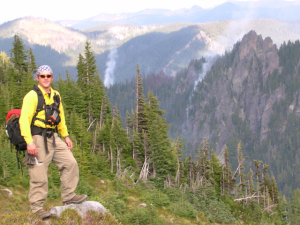
Me… back in the day, Mt Rainier NP, WA. (hiking in because 10 minutes earlier we almost crashed at the helispot…)
I am getting better. Over the years in service there were perhaps 100’s of close calls, life threats, death, trauma and stress, I just buried it all, apparently. I have sought help and receive enormous support from my family, friends and community. I have personally experienced the wisdom and guidance of Bhava Ram and with his, and many others assistance am making progress. There is a solution… and I invite you to please share, comment, post, repost, talk about in your community and in general send out the blessings to these men and woman who put it on the line for us… May we never forget.
Marc Titus, Founder & Director
Sedona Yoga Festival
Former Wildland Firefighter & Aviation Manager on a SW Area Type 1 Incident Management Team


Jan 30, 2014 | SYF2014 Presenters, Trauma Sensitive Yoga, Yoga for Vets, Yoga Pre-Conference
 This past weekend, I led a small group of caregivers in a discussion about their wounded service member. As an advisory board member of Tee It Up for the Troops, a nonprofit organization dedicated to using the game of golf to heal wounded warriors, I was asked to put together this discussion to talk about my experiences as a Purple Heart spouse and to open the door for healing. The 90-minute session went well over the time allotted, and we had to delay the yoga portion of the session for the next day! The takeaway was something I already know from experience: being a military family caregiver is hard, and being a caregiver to a wounded warrior dealing with post traumatic stress disorder (PTSD) and traumatic brain injury (TBI) is harder than you can imagine. The Nation’s focus on the service member and veterans – There are many programs available for service members and numerous organizations that support veterans. Some help with educational scholarships and employment, while others provide direct services such as housing. What we know is that an unhealthy veteran or service member cannot take good care of themselves nor will they be able to financially provide for their family. Alternative options such as yoga offer a mechanism to help the veteran and military service member get healthy. Strides in this area, like the White House’s Joining Forces Initiative and Mindful Yoga Therapy for Veterans, continue to increase. Still, the military family has to be an integral part of the total equation. How the military spouse/parent/caregiver is the glue for the entire military family and military community – If there is no family support for the service member, then he or she have a significantly difficult road ahead. A military spouse has to manage the entire household and if there are children involved, they instantly become a single parent. And if the service member becomes injured with visible and/or invisible wounds like PSTD or TBI, the role of the family member becomes paramount to the outlook of the wounded veteran. Often when this happens, as it did with me, the military family member neglects herself or himself. Military spouses need to care for themselves first: in speeches I’ve delivered I used the airplane oxygen mask analogy – put the mask on yourself first and then on your child – which means that you have to take care of yourself before anyone else in order to be more available for the service member. My Top 3 Things NOT to say to a military spouse or family member So far you may be thinking about military families differently, as I’ve presented some issues to ponder. What follows is a short list of what not to say to military families. This list in no way encompasses the numerous things that have been said to military family members (including me) but these are my top three:
This past weekend, I led a small group of caregivers in a discussion about their wounded service member. As an advisory board member of Tee It Up for the Troops, a nonprofit organization dedicated to using the game of golf to heal wounded warriors, I was asked to put together this discussion to talk about my experiences as a Purple Heart spouse and to open the door for healing. The 90-minute session went well over the time allotted, and we had to delay the yoga portion of the session for the next day! The takeaway was something I already know from experience: being a military family caregiver is hard, and being a caregiver to a wounded warrior dealing with post traumatic stress disorder (PTSD) and traumatic brain injury (TBI) is harder than you can imagine. The Nation’s focus on the service member and veterans – There are many programs available for service members and numerous organizations that support veterans. Some help with educational scholarships and employment, while others provide direct services such as housing. What we know is that an unhealthy veteran or service member cannot take good care of themselves nor will they be able to financially provide for their family. Alternative options such as yoga offer a mechanism to help the veteran and military service member get healthy. Strides in this area, like the White House’s Joining Forces Initiative and Mindful Yoga Therapy for Veterans, continue to increase. Still, the military family has to be an integral part of the total equation. How the military spouse/parent/caregiver is the glue for the entire military family and military community – If there is no family support for the service member, then he or she have a significantly difficult road ahead. A military spouse has to manage the entire household and if there are children involved, they instantly become a single parent. And if the service member becomes injured with visible and/or invisible wounds like PSTD or TBI, the role of the family member becomes paramount to the outlook of the wounded veteran. Often when this happens, as it did with me, the military family member neglects herself or himself. Military spouses need to care for themselves first: in speeches I’ve delivered I used the airplane oxygen mask analogy – put the mask on yourself first and then on your child – which means that you have to take care of yourself before anyone else in order to be more available for the service member. My Top 3 Things NOT to say to a military spouse or family member So far you may be thinking about military families differently, as I’ve presented some issues to ponder. What follows is a short list of what not to say to military families. This list in no way encompasses the numerous things that have been said to military family members (including me) but these are my top three:
- I could never do what you’re doing. How do you do it? Don’t say this. Ever.
- You asked for this: you knew what you were getting into when you married him/her. No. I did not know that my husband was going to get wounded in combat. Just don’t say this.
- Aren’t you afraid he’ll get hit by an IED or get post-traumatic stress? Of course. Keep this to yourself.
My Top 3 Things you can say to military families There are so many things you can do to help military families, beginning with your compassion, kindness and speech. Here are some examples:
- “I don’t know what you’re going through, but I want to help. What do you need?”
- “Let’s go to Starbuck’s.”
- “I’m going to the store/mall/post office/Chipotle’s – can I pick up something for you?”
Things to do for military families Still don’t know what to do? Ask friends, family and coworkers about local service members that are currently deployed or have been wounded. Link up with the families. You will be surprised at how close a military family may live to you.
- Bring them to yoga – If you are a yoga teacher, don’t make assumptions about this diverse population. Get educated and trained. And if you are a yoga practitioner, use compassion to help these families by offering to take them to a class with you.
- Help with chores – Mow the lawn, wash the car, shovel the snow, cook dinner, you get the idea. Just do it. Once my neighbor found out that my husband was deployed, he used his snow blower in my driveway during a winter storm and mowed my lawn once spring arrived, both without my request. I will always remember his thoughtfulness and generosity.
- Offer to babysit – This can take a huge weight off of a military spouse.
- Create a military family care package – This is done so much for the service member or veteran, and often the families are left out. If they are your neighbor, find out what they need or like. I like chocolate and lavender soap. J
- And lastly…..LISTEN – Lend a compassionate ear without trying to solve their problems. Sometimes military families just need to be heard.
 Some of my suggestions may be common be common sense as you may have already thought of them, or they may not be your cup of tea, so I encourage you to create your own or volunteer with a military family organization. The truth is that helping a military spouse and family is not difficult at all, as long as you understand their immense contribution to the military and to the nation.
Some of my suggestions may be common be common sense as you may have already thought of them, or they may not be your cup of tea, so I encourage you to create your own or volunteer with a military family organization. The truth is that helping a military spouse and family is not difficult at all, as long as you understand their immense contribution to the military and to the nation.  Pamela Stokes Eggleston has practiced yoga for over a decade and recently completed both her 200-hour yoga teacher training and prenatal yoga training in the Pranakriya Yoga tradition. She is continuing her yoga teacher training through the 500-hour Pranakriya program, and has completed the Mindful Yoga Therapy for Veterans (MYT) Training in 2012 to work with service members and veterans with post traumatic stress disorder (PTSD) and combat stress. Since 2004, as caregiver and spouse of an Operation Iraqi Freedom (OIF) wounded warrior with post-traumatic stress (PTS) and traumatic brain injury (TBI), she has been a strong and vocal advocate for service members, military spouses and veteran families. Pam is the Founder and CEO of Yoga2Sleep, LLC, ambassador for the Give Back Yoga Foundation, and serves on the support staff of Mindful Yoga Therapy for Veterans.
Pamela Stokes Eggleston has practiced yoga for over a decade and recently completed both her 200-hour yoga teacher training and prenatal yoga training in the Pranakriya Yoga tradition. She is continuing her yoga teacher training through the 500-hour Pranakriya program, and has completed the Mindful Yoga Therapy for Veterans (MYT) Training in 2012 to work with service members and veterans with post traumatic stress disorder (PTSD) and combat stress. Since 2004, as caregiver and spouse of an Operation Iraqi Freedom (OIF) wounded warrior with post-traumatic stress (PTS) and traumatic brain injury (TBI), she has been a strong and vocal advocate for service members, military spouses and veteran families. Pam is the Founder and CEO of Yoga2Sleep, LLC, ambassador for the Give Back Yoga Foundation, and serves on the support staff of Mindful Yoga Therapy for Veterans.
Jan 16, 2014 | Sedona Yoga, SYF2014 Presenters, Trauma Sensitive Yoga, Yoga for Vets, Yoga Pre-Conference
My name is Chris Eder…and I’ve spent the past 23 years on active duty service to THE United States of America as a Combat Correspondent in the Air Force. Since 9/11, I have found myself in some interesting places. Sometimes by myself, sometimes with people I had never met, and sometimes with people who I love(d) as a brother or a sister.
I don’t sleep. For many years, I just told people I was a “morning” person. That was maybe less than half true…as I really do enjoy being up before anyone else. Hot showers, fresh coffee, etc. But the truth was…I couldn’t sleep. I used to spend as many hours as possible working. People thought it was because I was a hard worker. OK…they were right! However, as I have learned over the years…working hard is also an unhealthy coping mechanism. Avoidance! It is hard to tell something is wrong when you continue to out-perform everyone!

In 2003, I found myself traveling throughout Iraq by any means possible. I was equipped with a 9mm, no ammunition, a flak vest I think my dad wore in Vietnam, and my camera gear. For a short period of time, I called the Al Rasheed Hotel home. That is until Oct 26, 2003 when insurgents attacked it with 68mm and 88mm rockets. Under Secretary of Defense Paul Wolfowitz was in the hotel that night. Check the story out, Sec Wolfowitz is wearing my flak vest! Things got worse after my second deployment to Baghdad during the “Surge of Operations.” Damn…the insurgents had our location dialed in! 20+ attacks a day seemed “normal” for so long.
So…why yoga? Hell…why not? What is the worst thing that can happen? I started yoga back in 1999 because of a pinched sciatic nerve and a diagnosis of Adult Attention Deficit Disorder. I instantly was hooked! During my 2007 deployment to Iraq, I was actually teaching 5-6 classes a week. Anyone…and I mean anyone… can do yoga. I introduce to you Lieutenant Colonel Tom Bryant.
Lieutenant Colonel Bryant, US Army is my friend/mentor and hands down the best person to ever come from Alabama. LTC Bryant is the last person I thought would try yoga. He is a typical Southern conservative, “Roll Tide!”-preaching, family loving, church going, hunting/fishing military kind of guy. He would often poke fun of me when we worked together about how I taught and practiced yoga. Tom recently sent me a Facebook message:

“Are you sitting down? You should.”
Last night I did yoga. And since I’m deployed, you know I wasn’t drunk or high. It lasted 20 minutes, was called relaxation yoga or something like that. Really just seemed like a lot of stretching to me, but this Japanese guy with a ponytail on the video kept talking about “seeing your breathing” and “step mindfully downward on your heels” and a bunch of other platitudinal crap I didn’t understand. But the stretching stuff was cool.”
Even this staunch yoga antagonist found yoga to be at the very least, “cool!” There is a good chance what you think Yoga is…is not at all what it really is. Yoga can be whatever you want it to be…killer workout, awesome stretch, or a time to reset and restore your batteries. For me, I *try* to start every day with 15-30 minutes of meditation and yoga. I also end each day with some grounding breath work to help clear and prepare my mind for sleep. Trust me…I know it sounds fruity, crazy, or even esoteric…but IT WORKS!
I’ve been practicing yoga since 1999 and teaching since 2007. I often wonder where I would be today without yoga. I see my brothers and sisters-in-arms who share *our* nightmares, panic attacks, alertness, relationship issues, memory problems…the list can go on forever. I know just how tough my life is…and wonder how much tougher and often debilitating it would be without yoga in my life.
YOGA helps by reducing your anxiety levels. For many of us Vets…that should be enough! Specifically, the tools and techniques leveraged in the Mindful Yoga Therapy for Veterans with PTSD, (MYT) it soothes the inner tiger. MYT is an embodyoga®-based, empirically informed, clinically tested program comprised of five practices: Pranayama (breathing), Asana (postures connected with breath), Yoga Nidra, Meditation, and Gratitude. Each practice is a tool Veterans can use to cope with Post Traumatic Stress, and together, they form a comprehensive system–a toolbox–that will carry Veterans into a life of strength and resilience. These yoga practices don’t cure PTSD…rather, they create a place where healing can begin.
Think YOU can’t do yoga? Think again! You probably can’t run a marathon either…but if you wanted to, you would start of slow. You should do the same thing with yoga.
For me, MYT has been a game changer. There are many different styles of yoga available. I like all of them too! Each style of yoga is based on a set of accepted and foundational precepts of Hatha yoga. However, not all yoga is beneficial to Veterans struggling with trauma. The five practices that comprise the MYT tool-kit specifically target your parasympathetic nervous system (PNS). Many Veterans suffering from PTSD have an over stimulated sympathetic nervous system (SNS). This is the flight or fight system…very important to have engaged during war…but not very helpful to be engaged when you return…or…constantly engaged for days, weeks, months. These MYT practices will help greatly (have worked greatly for me) at reducing an over-stimulated SNS.
My favorite tools are the breathing tools. They have the greatest impact on ‘chillining’ me out. How can something so simple do so much? How can something we take for granted (usually until our last breath) be so effective in our recovery? Just for fun…I’d like for you to stop breathing for 20 minutes. What…you can’t? You think you might die. I agree! So…public math here…if I can increase both the quality and quantity of your breath…would that not increase the quality and quantity of your life? Check out this free sample from Suzanne Manafort.
BIO:

Chris Eder is a certified Vinyasa/Hatha Interdisciplinary Yoga Instructor, journalist, and Director of Communications for MYT. His yoga journey began in 1999 after he encountered the joys of a pinched sciatic nerve and a diagnosis of Adult ADD. A friend introduced him to yoga as an alternative to pain pills and other meds. When not teaching yoga, he is working on his seva project, MalaforVets.
Some Recent Photos from Chris’s Practice…
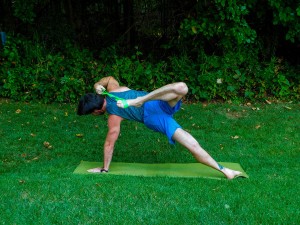
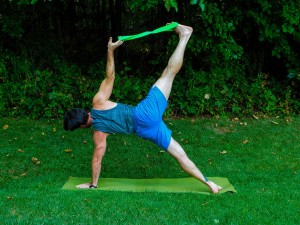
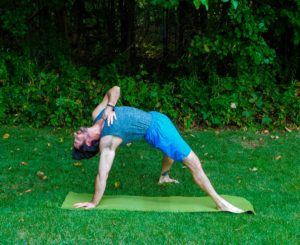

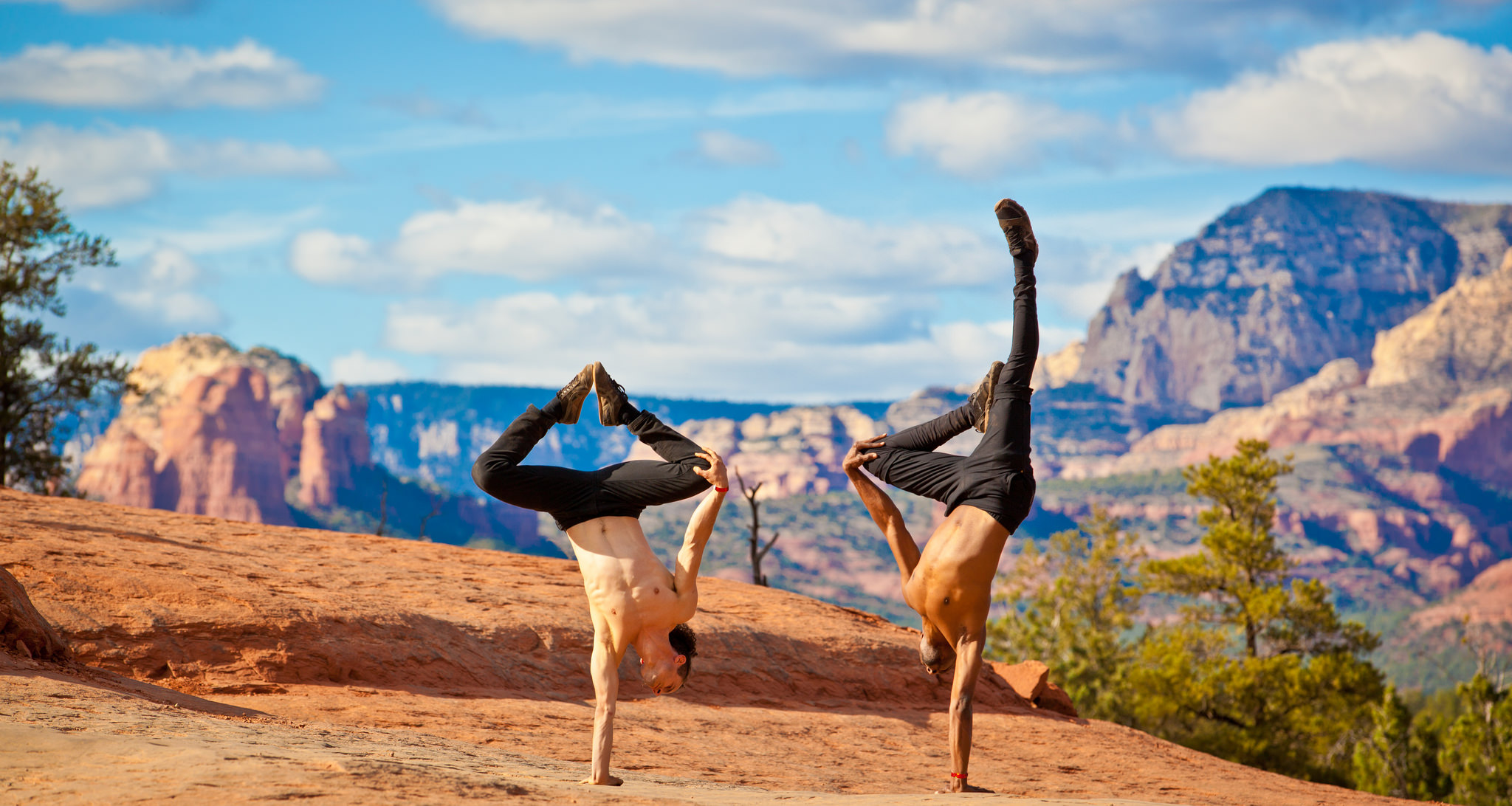
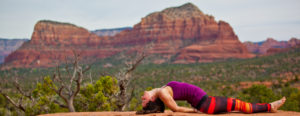
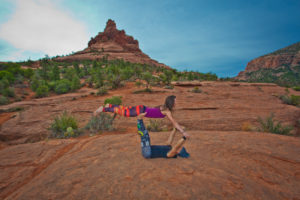


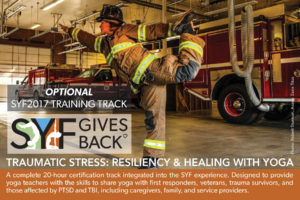
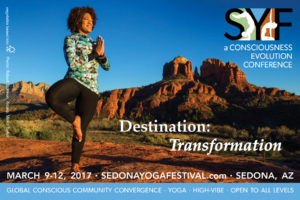

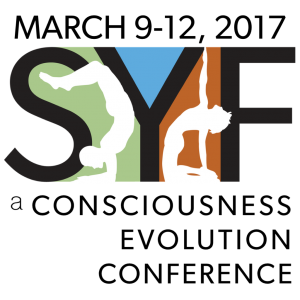 Sedona, Arizona… The undisputed spiritual mecca of the American Southwest, red rock canyons, spires to inspire, the water element of Oak Creek Canyon, and of course, the ENERGY. No matter your beliefs or background, Sedona is sure to make you feel something. And it has been known since time immemorial to support human transformation. Indigenous tribes frequented the area for ceremony and gathering, yet lived in the distant canyons. It is palpable.
Sedona, Arizona… The undisputed spiritual mecca of the American Southwest, red rock canyons, spires to inspire, the water element of Oak Creek Canyon, and of course, the ENERGY. No matter your beliefs or background, Sedona is sure to make you feel something. And it has been known since time immemorial to support human transformation. Indigenous tribes frequented the area for ceremony and gathering, yet lived in the distant canyons. It is palpable.
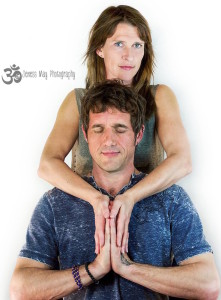 You see, I had been practicing for over a decade when I moved to Sedona, AZ to deepen my practice and become a yoga teacher. To make a long story short, I Love YOGA (it has saved me from myself
You see, I had been practicing for over a decade when I moved to Sedona, AZ to deepen my practice and become a yoga teacher. To make a long story short, I Love YOGA (it has saved me from myself 











 One faculty member, Bhava Ram aka Brad Willis, is a former award winning network news war correspondent. A broken back ended his career. After a subsequent diagnosis of terminal cancer he embraced mind/body/spirit medicine and the deeper sciences of Yoga and Ayurveda, through which he ultimately healed against all odds. As a yoga teacher he now shares the message that we all have the inner power to heal. “As one who was on the front lines of conflicts and crises in Iraq, Afghanistan, Africa and Central America, I can attest to the fact that yoga gave me the strength to lift myself out of an abyss of profound physical and mental anguish and ultimately find new meaning and purpose in life.”
One faculty member, Bhava Ram aka Brad Willis, is a former award winning network news war correspondent. A broken back ended his career. After a subsequent diagnosis of terminal cancer he embraced mind/body/spirit medicine and the deeper sciences of Yoga and Ayurveda, through which he ultimately healed against all odds. As a yoga teacher he now shares the message that we all have the inner power to heal. “As one who was on the front lines of conflicts and crises in Iraq, Afghanistan, Africa and Central America, I can attest to the fact that yoga gave me the strength to lift myself out of an abyss of profound physical and mental anguish and ultimately find new meaning and purpose in life.”


 Pamela Stokes Eggleston has practiced yoga for over a decade and recently completed both her 200-hour yoga teacher training and prenatal yoga training in the Pranakriya Yoga tradition. She is continuing her yoga teacher training through the 500-hour Pranakriya program, and has completed the Mindful Yoga Therapy for Veterans (MYT) Training in 2012 to work with service members and veterans with post traumatic stress disorder (PTSD) and combat stress. Since 2004, as caregiver and spouse of an Operation Iraqi Freedom (OIF) wounded warrior with post-traumatic stress (PTS) and traumatic brain injury (TBI), she has been a strong and vocal advocate for service members, military spouses and veteran families. Pam is the Founder and CEO of Yoga2Sleep, LLC, ambassador for the Give Back Yoga Foundation, and serves on the support staff of Mindful Yoga Therapy for Veterans.
Pamela Stokes Eggleston has practiced yoga for over a decade and recently completed both her 200-hour yoga teacher training and prenatal yoga training in the Pranakriya Yoga tradition. She is continuing her yoga teacher training through the 500-hour Pranakriya program, and has completed the Mindful Yoga Therapy for Veterans (MYT) Training in 2012 to work with service members and veterans with post traumatic stress disorder (PTSD) and combat stress. Since 2004, as caregiver and spouse of an Operation Iraqi Freedom (OIF) wounded warrior with post-traumatic stress (PTS) and traumatic brain injury (TBI), she has been a strong and vocal advocate for service members, military spouses and veteran families. Pam is the Founder and CEO of Yoga2Sleep, LLC, ambassador for the Give Back Yoga Foundation, and serves on the support staff of Mindful Yoga Therapy for Veterans.






